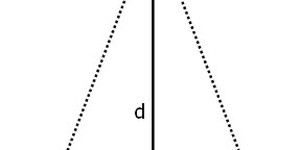Eighth Grade, Astronomy Science Projects (24 results)
Astronomy is science that will challenge your imagination. How many stars in a galaxy? How many galaxies in the known universe? How many strange worlds are out there on other planets, orbiting other stars, and what are they like? Is there life on planets besides Earth? The distances are mind-boggling; the numbers are immense.
|
Select a resource
Sort by
|
Get good photographs of the Moon showing lots of craters and count how many craters you find in a range of diameter classes. One useful source is the Consolidated Lunar Atlas (Kuiper et al, 2006). Make a histogram that shows the distribution of diameters. Most of these craters were formed during the first billion years of the Moon's formation, but you should confirm that this is true for the the Moon areas you've selected in your photographs by doing background research. Is cratering uniform…
Read more
Featured
Have you heard that garlic powder is supposed to inhibit the growth of bacteria? Which do you think would make a better disinfectant: a solution of garlic powder or a solution of bleach? This project shows you a straightforward way to compare the effectiveness of different disinfectants (or other antimicrobial agents), by measuring zones of inhibition on a culture plate.
Read more
Want to stretch your imagination? One good way is to try to imagine how far it is to a distant star. How much farther away is it than the moon is from the earth? How much farther away than the earth is from the sun? How long would it take to get there? In this project, you'll learn one way of measuring the distance without leaving Earth.
Read more
Here's a cool project that shows you how to use images from an orbiting observatory to measure how fast the Sun rotates.
Read more
Some claim the Moon appears larger when near the horizon. Make a series of observations of the Moon, measuring the Moon's angular diameter each time. You should also note the Moon's altitude above the horizon, and the Moon's phase. You should do background research on the lunar orbit to determine the necessary time period. Do you find predictable variations in the Moon's diameter? Can you relate this to the Moon's changing distance from Earth? From your data, try to determine when apogee and…
Read more
|
Explore Our Science Videos
Potato Battery Science Project
Can You Charge Your Phone with a Potato?
Video: How to Balance Anything







